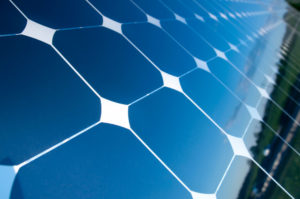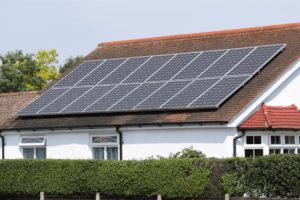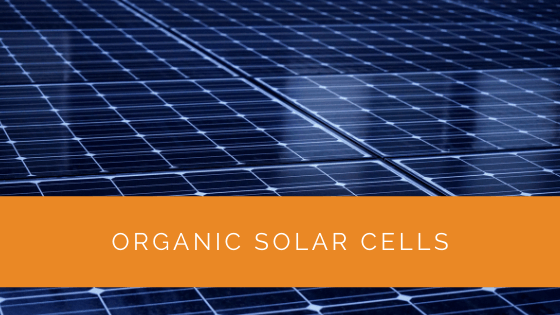Do you have a solar panel to generate electricity at your home? Or are you a big fan of that solar-powered calculator? Either way, you have to thank the solar industry for blessing us all with its miracles! More so, for the renewable energy it provides!
As technology progresses, how could the photovoltaic effect-based solar cells be behind?
And with that thought came the Organic cells. This article will run you through all the essential information regarding these new solar cells and what you must know if you plan to use them.
Contents
- 1 Key Takeaways
- 2 What Is an Organic Solar Cell?
- 3 What Is the Structure of An Organic Cell?
- 4 Advantages of Organic Photovoltaic Cells
- 5 Disadvantages of Organic Solar Cell
- 6 Price of Organic Cells
- 7 Recent Organic Cells News
- 8 Case Study: Implementing Organic Solar Cells in an Urban Environment
- 9 Expert Insights From Our Solar Panel Installers About Organic Solar Cells
- 10 Discover the Power of Solar with Solar Panels Network
- 11 Wrapping Up
Key Takeaways
Organic solar cells, or organic photovoltaic cells (OPVs), are a third-generation solar cell technology that can efficiently harness solar energy and have advantages such as lightweight, large area coverage, low-cost manufacturing, and flexibility.
OPVs have the potential to revolutionize the solar industry by offering affordable and accessible solar technology, although they are still in the developmental stage.
While OPVs have high efficiency, they face challenges such as a shorter operational lifetime compared to traditional crystalline silicon solar cells, and research is ongoing to improve their performance and durability.
What Is an Organic Solar Cell?
An organic solar cell or Photovoltaic cell is the third generation of popular solar cell technology. They are pretty solid solar energy absorbent and can harness huge amounts of sunlight compared to other solar cells.
Organic photovoltaics or plastic solar cells are the future of solar technology, and with their wonderful qualities, you can use solar power almost anywhere!
These organic or plastic solar cells are polymer solar cells that utilize organic material electronics to function. Organic electronics is a stream of electronics responsible for the conductive organic polymers or the tiny organic molecules. These molecules are responsible for light absorption and charge transport to produce electricity using sunlight.
These cells convert solar energy into electrical energy way more efficiently than previous cells, like silicon solar cells in common solar panels.

What Is the Structure of An Organic Cell?
Organic cells are high-voltage cells with a similar structure to crystalline silicon-based solar cells. The main difference between these two cells is the presence of a conducting layer. Rather than the crystalline silicon, organic cells would have carbon-based compounds like small organic molecules, which are printed through a very thin layer in the plastic backing.
Advantages of Organic Photovoltaic Cells
A polymer solar cell has many benefits that make it the catch! They are very lightweight, have a big area coverage, and have low-cost manufacturing. The OPVs are very thin filmed solar cells that store huge amounts of energy. This Organic solar cell technology is leading the research and development phase of the solar industry, and much more is waiting to unfold!
An organic photovoltaic cell has flexible solar modules and can be conveniently fabricated with roll-to-roll production. This process is very cost-efficient compared to conventional solar cell manufacturing methods.
Moreover, this new solar technology produces portable electronic devices that can be easily recharged on the go even in low lighting and partial shading hit solar panels.
The organic cell generates a very high voltage to recharge a lithium-ion battery straight up. You would not even need to connect multiple individual cells in a series.
Unlike silicon solar cells, these organic cells work extremely well in varied light conditions, especially in those locations where the sunlight is pretty low. This quality particularly makes it a win for consumer electronic devices.
Although these solar cells are only in the test phase, the promising results of this solar power product will surely bring them to the market.
Top Benefits of Plastic Solar Cells
- Low weight and high flexibility of their PV modules
- The OPV consists of a semi-transparent characteristic
- It is convenient to integrate these solar cells into products and solar panels
- Due to the design features like flexible solar modules, these solar cells are creating new market opportunities
- The manufacturing cost is very low when compared to previous solar cells
- These cells can be created in a continuous process with the help of printing tools
- OPV cells have very few harmful impacts on the environment. They also have a short energy payback time!
Disadvantages of Organic Solar Cell
If you want the organic solar cell to perform better than the silicon-based solar cells, the donor and acceptor materials in the cell must have decent extinction coefficients.
This means the array of measures responsible for the light absorption in a certain medium. Moreover, the OPV should also have a good film structure and high stability.
Even though organic photovoltaics are more efficient than silicon solar cells, the operational lifetime is not pretty long.
The OPV cells are still in the developmental stage. So, processing methods, various new materials, and device architectures need to be checked and monitored if the shelf life has to be improved!
Price of Organic Cells
Many households and businesses around the world are widely using solar cells.
The fact that the technology is relatively new is the reason behind the high price of solar cells. The main raw material in these solar cells is crystalline silicon. This element provides an efficiency of about 10 per cent in solar panels.
When you include the installation cost, support for the solar panels, DC to AC converters, and wiring, the solar cell price reaches a high value. Along with these facts, the ideal life of a solar panel is 30 years, so you should also add the cost of a new installation to the mix.
Organic cells are the next evolutionary step in terms of making solar technology affordable and accessible to a larger quantity of people. Although the organic solar cell technology is new, the cost of manufacturing will range from 30 euros to 90 euros per square meter.

Recent Organic Cells News
Organic power has been traditionally less tolerant to environmental factors such as moisture, sunlight, and oxygen exposure, which seriously negatively affect these organic cells.
Especially when comparing them to the traditional crystalline cells.
As a ray of light, engineers have created a solution to the degradation issues faced by organic cells.
They worked on removing a molecule named Phenyl-C 61-butyric acid methyl ester, or the PCBM, from the highest layer of organic cells. Due to this change, water and oxygen cannot harm the organic cells as much.
With these breakthroughs, the organic cells will experience new advancements in their new and real products. Along with these technical improvements, continuous testing and implementation will help organic photovoltaic technology improve over traditional crystalline technology.
Three main universities, the University of Florida, the University of Michigan, and Princeton University, are conducting rigorous research with a special focus on elevating these solar cells’ lifetime and organic power conversion efficiencies.
According to recent research by the Department of Energy, solar cells have efficiencies that go well beyond 10 per cent. Many other researchers have found this number even higher in controlled situations.
Most highly efficient crystalline silicon solar panels have efficiencies greater than 22 per cent. Isn’t that amazing?
But OPVs still have a lot of work to do before they can properly compete and win over silicon cells regarding efficiency.
Case Study: Implementing Organic Solar Cells in an Urban Environment
Background
In the heart of a bustling UK city, the demand for sustainable energy solutions is higher than ever. With limited space for traditional solar panel installations, the need for innovative alternatives led us to explore the potential of organic solar cells. This project aimed to evaluate the feasibility and effectiveness of organic photovoltaics (OPVs) in an urban setting.
Project Overview
Our client, a forward-thinking real estate developer, sought a solution for integrating renewable energy into a new residential building. The primary goal was to provide tenants with a sustainable energy source while maintaining aesthetic appeal and architectural integrity. Given the project’s constraints, traditional silicon-based solar panels were unsuitable due to weight and rigidity concerns. Organic solar cells, known for their lightweight and flexible characteristics, emerged as the ideal solution.
Implementation
- Assessment: Identified optimal locations on the building’s façade and rooftop for OPV installation, taking into account architectural features and shading.
- Fabrication: Utilised roll-to-roll manufacturing techniques to produce the organic solar cells, ensuring flexibility and ease of installation on curved and uneven surfaces.
- Installation: Seamlessly integrated the OPVs into the building’s structure, focusing on minimal disruption to the ongoing construction process.
- Energy Management: Installed a smart energy management system to monitor and optimise power output, ensuring efficient energy use and stability.
Results
- Carbon Footprint Reduction: Achieved a significant reduction in the building’s carbon footprint, aligning with sustainability objectives and reducing environmental impact.
- Energy Coverage: The energy produced by the OPVs covered a substantial portion of the building’s daytime energy needs, contributing to lower operational costs.
- Aesthetic Integration: Maintained the modern and sleek design of the building, with the OPVs adding to the visual appeal and receiving positive feedback from stakeholders.
- Performance: Demonstrated the viability of OPVs in urban environments, particularly in areas with varied light conditions, and showcased their potential for broader adoption.
Summary
Our experience with this project demonstrated the viability of organic solar cells as a practical solution for urban renewable energy challenges. The lightweight, flexible nature of OPVs, combined with their ability to perform under diverse lighting conditions, offers a promising alternative to traditional solar technologies. As research and development in this field continue, we anticipate even greater efficiencies and broader applications for organic photovoltaics in future projects. At Solar Panels Network, we are excited to be at the forefront of these advancements, bringing cutting-edge solar solutions to our clients.
Expert Insights From Our Solar Panel Installers About Organic Solar Cells
Organic solar cells are an exciting development in the solar industry, offering unique benefits such as flexibility and lightweight, which can be especially useful for unconventional installations. These cells are perfect for innovative applications like building-integrated photovoltaics, where traditional panels might not be feasible.
Senior Solar Installer
While the efficiency of organic photovoltaic cells is still improving, they already present a promising alternative for environments where traditional silicon panels might not perform well, such as in areas with lower light conditions. The potential for lower manufacturing costs also makes them an attractive option for broader adoption.
Renewable Energy Consultant
The environmental impact of organic solar cells is another key advantage. They typically involve less intensive materials and manufacturing processes compared to traditional silicon panels, making them a more sustainable choice in the long run.
Lead Solar Technician
Discover the Power of Solar with Solar Panels Network
Are you navigating the world of solar installations? Look no further than Solar Panels Network, the UK’s trusted partner in harnessing the sun’s potential. Our dedication goes beyond just installations; we’re on a mission to transform how homeowners and businesses across the UK perceive and utilise energy. By choosing us, you’re reducing your carbon footprint and making a smart financial move that promises savings for years ahead. Contact us today and embark on your solar journey.
Wrapping Up
So, that’s a wrap for today, people! OPVs might seem like a renewable energy dream, but they will become a reality before you know it. They are already in an advanced testing state, and with continued excellence and efficiency, they will be out on market shelves, ready for solar installation in no time.
Moreover, if you are currently interested in buying highly efficient solar energy products or panels, you can look for highly positive reviewed options online and purchase them.
About the Author
Solar Panels Network stands at the forefront of solar energy solutions, driven by a team of seasoned solar engineers and energy consultants. With over decades of experience in delivering high-quality solar installations and maintenance, we are committed to promoting sustainable energy through customer-centric, tailored solutions. Our articles reflect this commitment, crafted collaboratively by experts to provide accurate, up-to-date insights into solar technology, ensuring our readers are well-informed and empowered in their solar energy decisions.

